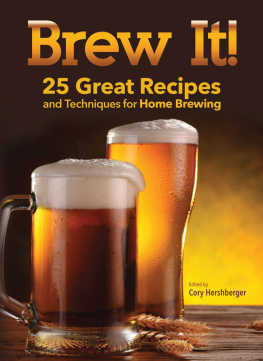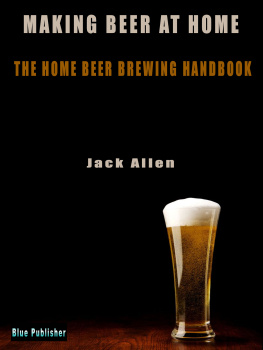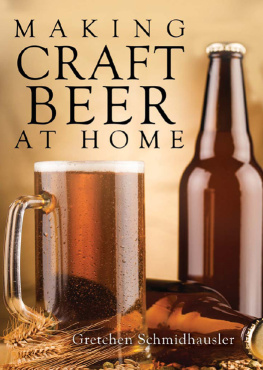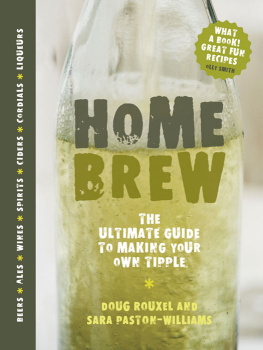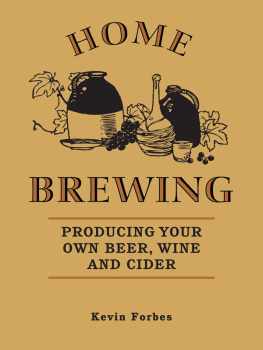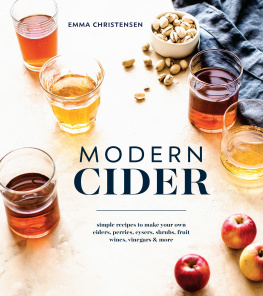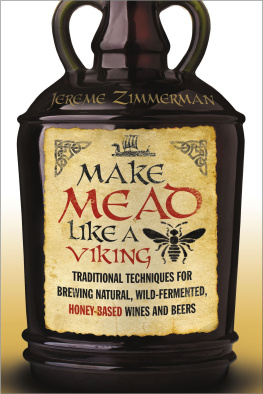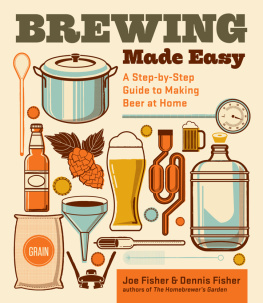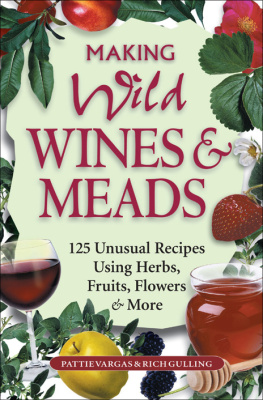Homegrown Wines
The Encyclopedia of Home Winemaking by Andr Vanasse and Pierre Drapeau, Dundurn Publishing, 2005.
From Vines to Wines: The Complete Guide to Growing Your Own Grapes and Making Your Own Wine by Jeff Cox, Storey Publishing, 1999.
101 Recipes for Making Wild Wines at Home by John N. Peragine, Atlantic Publishing, 2009.
Home Brews
The Everything Homebrewing Book by Drew Beechum, Adams Media, 2009.
Making Beer by William Mares, Alfred Knopf, 1994 (revised edition).
The New Complete Joy of Homebrewing by Charlie Papazian, HarperCollins, 1991.
Cider
Cider: Making, Using and Enjoying Hard & Sweet Cider by Annie Proulx and Lew Nichols, Storey Publishing, 1997.
Cider, Hard and Sweet: History, Traditions, and Making Your Own by Ben Watson, The Countryman Press, 1999.
Real Cidermaking on a Small Scale by Michael Pooley and John Lomax, Trans-Atlantic Publications, Inc., 1999.
A Honey of a Drink
The Compleat Meadmaker by Ken Schramm, Brewers Publications, 2003.
Dare to Distill
Home Distillers Handbook by Matt Teacher, Cider Mill Press, 2011.
Moonshine by Matthew B. Rowley, Lark Books, 2007.
Interesting Infusions
Dr. Cocktail: 50 Spirited Infusions to Stimulate the Mind & Body by Alex Ott, Running Press, 2012.
Infused: 100+ recipes for Infused Liqueurs and Cocktails by Susan Elia MacNeal, Chronicle Books, 2006.
The Seasonal Cocktail Companion by Maggie Savarino, Sasquatch Books, 2011.
Garden to Glass
The City Homesteader by Scott Meyer, Running Press, 2011.
Rodales All-New Encyclopedia of Organic Gardening, edited by Fern Marshall Bradley and Barbara W. Ellis, Rodale Press, 1993.
The Self-Sufficient Life and How to Live It by John Seymour, DK Publishing, 2009.
Uncommon Fruits for Every Garden by Lee Reich, Timber Press, 2008.

F ERMENTATION HAPPENS: IF YOU LEAVE A SOLUTION THAT CONTAINS sugar and water exposed to air, naturally occurring microbes will feast on the sugars and turn them into alcohol or (depending on the kind of sugar) into acids. Prehistoric people, and maybe many other creatures, must have discovered this transformation by accident and found that fermented foods and drinks were not only safe to eat, but beneficial in a variety of ways. They found that fermented honey, fruit, and grains were pleasurable to drink and had medicinal and even spiritual uses. The earliest civilizations had learned to manage the fermentation process and by the time of the classical Greek and Roman periods, making alcohol and fermented foods was commonplace. In fact, fermented beverages were essential for public health in places where people settled and polluted their own water supplies. Still, it was not until Louis Pasteur studied and explained the activity of yeast and bacteria in the 1860s that fermentation was clearly understood to be the result of yeasts digestion. Before Pasteur, fermentation was thought to be the result of spontaneous generationa gift of God.

Fermenting is not just a way to make alcoholits a food preservation process. Fermenting milk into cheese and yogurt are ways to keep milk consumable longer, just as pickles and sauerkraut keep fresh cucumbers and cabbage edible well past the time when they would spoil. Fermentation unlocks the precursors to and reveals the flavors of fruit and grains, and preserves them for years after. Fermentation preserves food because the yeast reproduces faster than the undesirable microbes that cause spoilage, and then the alcohol or acids that are the result of fermentation reach levels that kill off all of the microbes, good and bad. Fermentation lets you safelyand deliciouslypreserve a wide variety of homegrown ingredients, as youll see throughout this book.
Fermenting is the first step to making stronger drinks, too. The raw ingredients in spirits such as brandy, apple jack, and bourbon are fermented to turn them into alcohol and then the alcohol and flavors are concentrated through distillation. Well get into distilling in , but here well start with the basic information and steps to fermenting your garden-fresh foods.
Home fermenting can become a costly hobby, but it doesnt have to be expensive when you are starting out. You do, however, need a few basic items to get started. Search online and at local supply stores; you may find well-cared-for used equipment that will serve your needs as you learn more about what works for you.
BASIC GEAR
Moist, sugar-rich ingredients left in any container will begin to ferment, but when you want a predictably palatable result, it helps to have some simple, low-cost gear to help you stay on track. Most crucial, unless you protect the fermented beverages from oxygen, ).
PRIMARY FERMENTER. When blending all of your ingredients and pitching the yeast, youll find it easiest to work in a container with a wide open top, like a food-grade plastic bucket. Beware of non-food-grade garbage cans, which may be treated with rat poison. A 6-gallon container is ideal, because it gives you plenty of room to make manageable batches from 1 to 5 gallons. Considering that a gallon of liquid weighs about 8 pounds, anything larger is too heavy to manage. You can buy plastic buckets designed for home fermenters, which have gallon markings indicating the volume levels and an opening drilled and plugged where a spigot can be inserted. If you get any other containerand you can find lots of suitable, food-grade buckets that are discarded by restaurants and other food-service operationsyou can mark the levels yourself and drill out a hole for the spigot. Just be wary of any bucket that has many nicks and scratches where bacteria can colonize.
As you will read in greater detail in the section on oxygen (), you can choose to allow your must to be exposed to the air during the active primary fermentation, though it does risk contamination by acetic acid bacteria (the kind that make vinegar) and other undesirable microbes that derail the yeasts work. As long as the surface shows a head of bubbles, there is typically enough CO2 evolving from the fermentation to blanket the must or wort (the liquid that becomes wine, cider, mead, or beer) and protect it from the oxygen needed by acetic acid bacteria to survive. You want to at least cover it with a cheesecloth to keep bugs and debris out. For a safer, closed fermentation, get a bucket with a tight lid that can be fitted with a fermentation lock.

Primary Fermenter
SECONDARY FERMENTER. Glass carboyslarge jugs with a narrow openingare the choice for secondary fermentation of nearly every experienced home brewer and vintner. The carboys design is ideal for fermentation because it minimizes the amount of oxygen that comes in contact with the must. The cone-shaped top traps nitrogen, which forms a natural barrier to oxygen.
Carboys are commonly available in 1-, 3-, 5- and 6-gallon sizes. You can find them at yard sales and flea markets, as well as from online and retail suppliers like those listed in Resources on . If you buy them used, be sure they have no cracks or chips. Get clean new caps for them.






